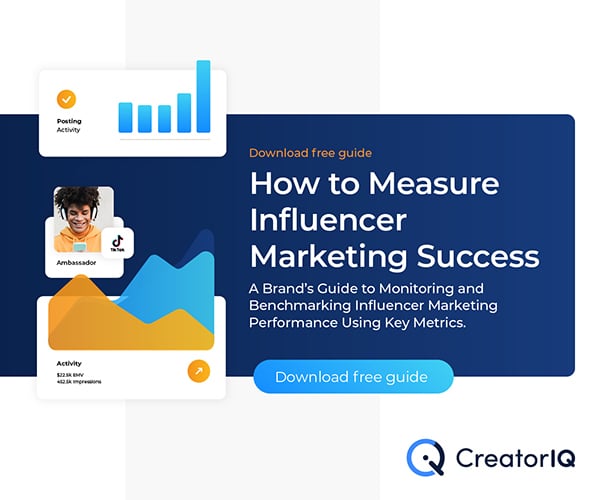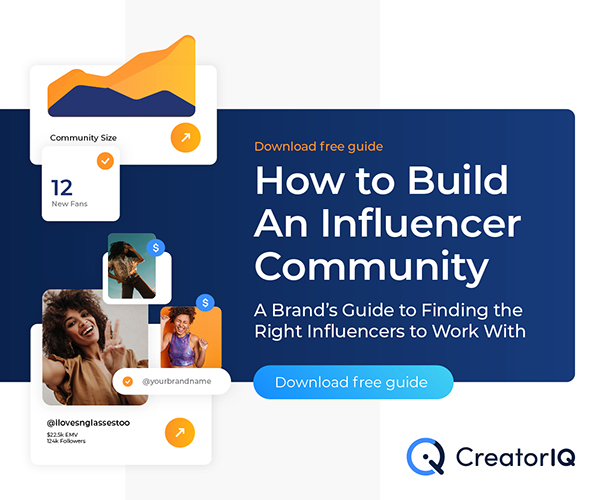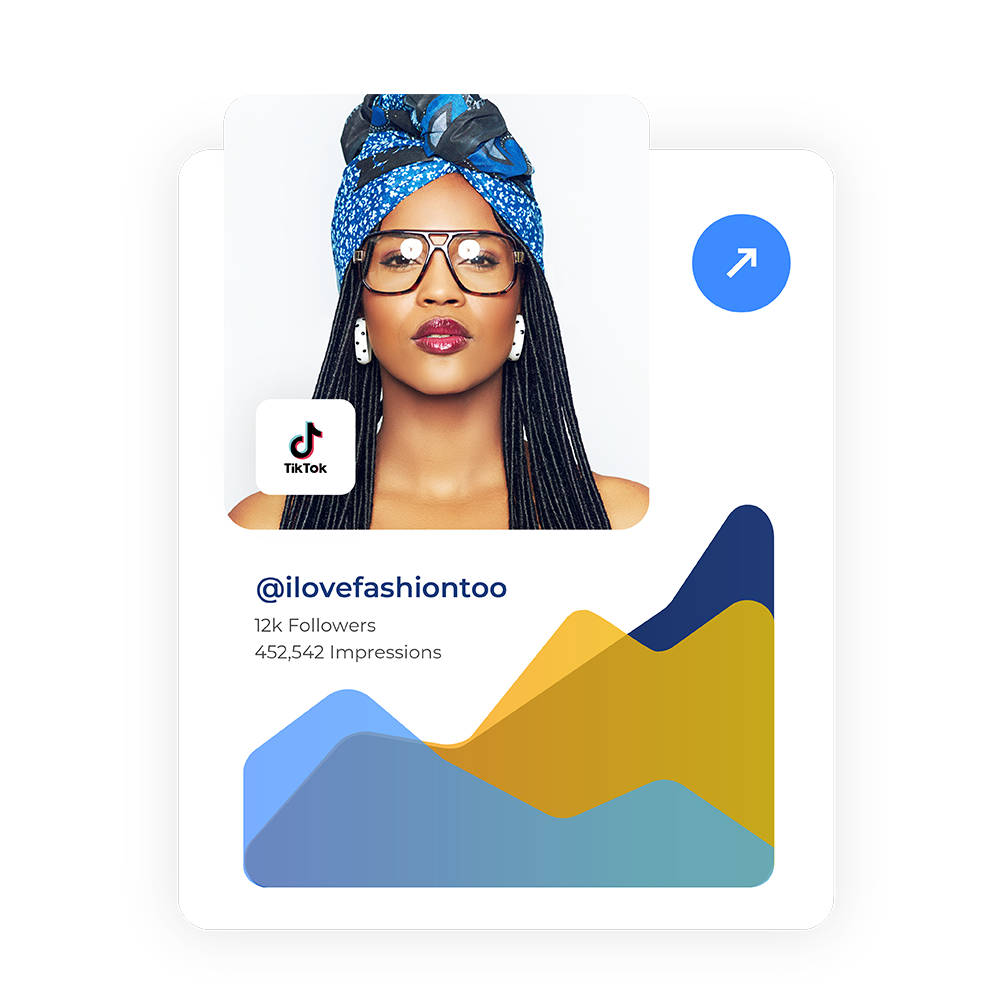How to Measure the Success of an Influencer Relationship
There’s no singular formula to determine how much an influencer relationship is worth. But by familiarizing yourself with key aspects of an influencer’s behavior, you can better understand how passionate they are about your brand, and their impact on potential customers. In this video, Taylor from Tribe Dynamics, a CreatorIQ company, talks through five powerful metrics your brand can—and should—leverage to measure the success of your influencer marketing efforts, and set actionable goals.


Don't have time to watch?
Read the transcript below.
Influencer marketing is no longer optional for beauty, fashion, and lifestyle brands hoping to reach today's content- hungry consumers. And while many brands are now investing more into building out their digital communities, reliably measuring your influencer program's impact remains a common roadblock to continued success. Without adequate data and tools it can be difficult to gauge the efficacy of your brand's influencer marketing efforts and understand where to focus your resources moving forward.
Hi. I'm Taylor from Tribe Dynamics, a CreatorIQ company, and today I'm going to walk through a few powerful metrics that your brand can and should leverage to measure the success of your influencer marketing program and set actionable goals, because data- driven decisions are the cornerstone of effective influencer marketing. In this video we'll focus specifically on how to measure the success of an individual influencer relationship. But stay tuned for Part Two, where we'll explore how to measure the success of your influencer community as a whole. Let's jump in. You probably have a rough sense of where your brand stands with a given content creator, but it's much more challenging to quantifiably assess the strength of that influencer's connection to your brand and how their activity is affecting consumer behavior. While there's no single formula to determine how much an influencer relationship is worth, you can better understand how passionate they are about your brand and their impact on potential customers by familiarizing yourself with a few key metrics.
The first of these is posting activity. The easiest way to determine how invested an influencer is in your brand is to monitor how many times they mention you in a given month. The more consistent an influencer's posting activity from month to month, the more passionate they likely are about your brand and the greater the long- term impact of their support on consumers. Your consistent brand champions deserve to be celebrated and you can reward their enthusiasm with gifts or other gestures that express your appreciation for their support. On the other hand, it's also useful to note which influencers are posting less regularly about your brand so that you can re-engage these content creators and keep them from completely losing interest.
Your brand can also quantify the impact of an influencer's content with estimated impressions and engagement rate. As a quick review, estimated impressions gauges roughly how many people were shown a piece of content. Since posts from popular influencers typically reach more followers than posts from smaller- scale influencers, estimated impressions are closely tied to follower count. Meanwhile, engagement rate measures the amount of engagement a post receives relative to that influencer's audience size, revealing how motivated the influencer's followers were to interact with that piece of content.
In addition to a post engagement rate, you can also look at the engagement rate of an influencer to assess how interested their audience tends to be in their content overall. While it may be tempting for a brand to go after an influencer with a huge following, we recommend that brands prioritize the passion of an influencer's audience over its size. And you should always aim to partner with content creators who have engaged followings. Influencers who have fans that regularly interact with their posts are likely to see their audience grow, while content creators who have large but passive followings are more likely to lose some of their less engaged followers.
Next, let's talk about fit. You probably have a solid grasp on your brand's aesthetic and you know whether or not an influencer's content has the look and feel you're after. But image isn't everything. The best way to see how aligned a content creator is with your brand is through fit, which is a data- driven way of measuring how well your brand resonates with an influencer's audience. Fit is calculated by comparing the engagement that posts mentioning your brand receive to other posts that the influencer creates. If the engagement with posts mentioning your brand is lower than the engagement with their other posts, that influencer is classified as a poor fit. Fit is crucial to consider when you're thinking about activating an influencer in any capacity, from entering into a formal partnership, to including them in a product send. Before devoting your time and resources to nurturing a new or existing connection, you should use fit to ensure that the influencer is a strategic match for your brand and that your efforts are worthwhile. Plus, brands that prioritize fit are at an advantage because influencers with a stronger fit, tend to post more consistently than influencers with a weaker fit.
Finally, if you're interested in comparing an influencer's contribution to your brand's earned media footprint over time, you can turn to Earned Media Value, or EMV. EMV is Tribe Dynamics' proprietary holistic metric that uses engagement data to quantify the estimated value of influencer activity. And it's most useful for influencer performance benchmarking. But when evaluating an influencer's activity, take care not to use EMV as an isolated metric, and instead examine EMV in the context of other data like posting activity or engagement rate. And keep in mind that a single post from an influencer with a large audience will generate more EMV than a post from a smaller influencer. But if that smaller influencer posts about your brand more consistently and has stronger engagement, they're far more valuable to your brand in the long run.
All right, now that you're familiar with some key metrics that help you measure the success of your individual influencer relationships, the next step is learning how to gauge the health of your influencer community as a whole. Which we'll be discussing in Part Two of this series, so be sure to subscribe to our channel and keep an eye out for that video. To learn more about how to understand and apply the metrics we discussed today, and to see how Tribe Dynamics' influencer marketing analytics platform makes it super easy to keep tabs on all these key data points, be sure to download our Guide to Measurement Report, or request a demo. Thanks so much for watching, and we'll see you back here for Part Two.
Watch More Videos on Influencer Marketing




